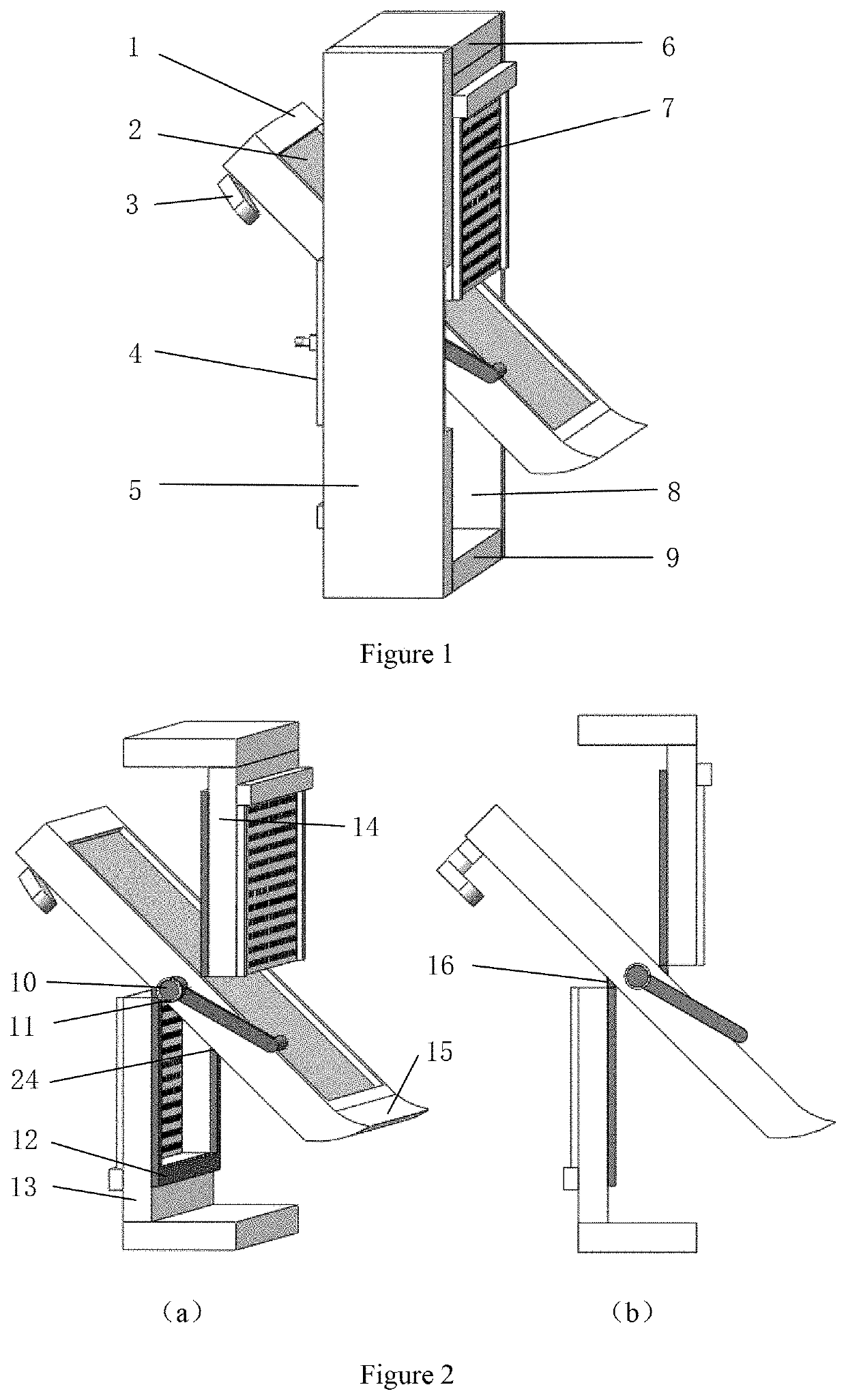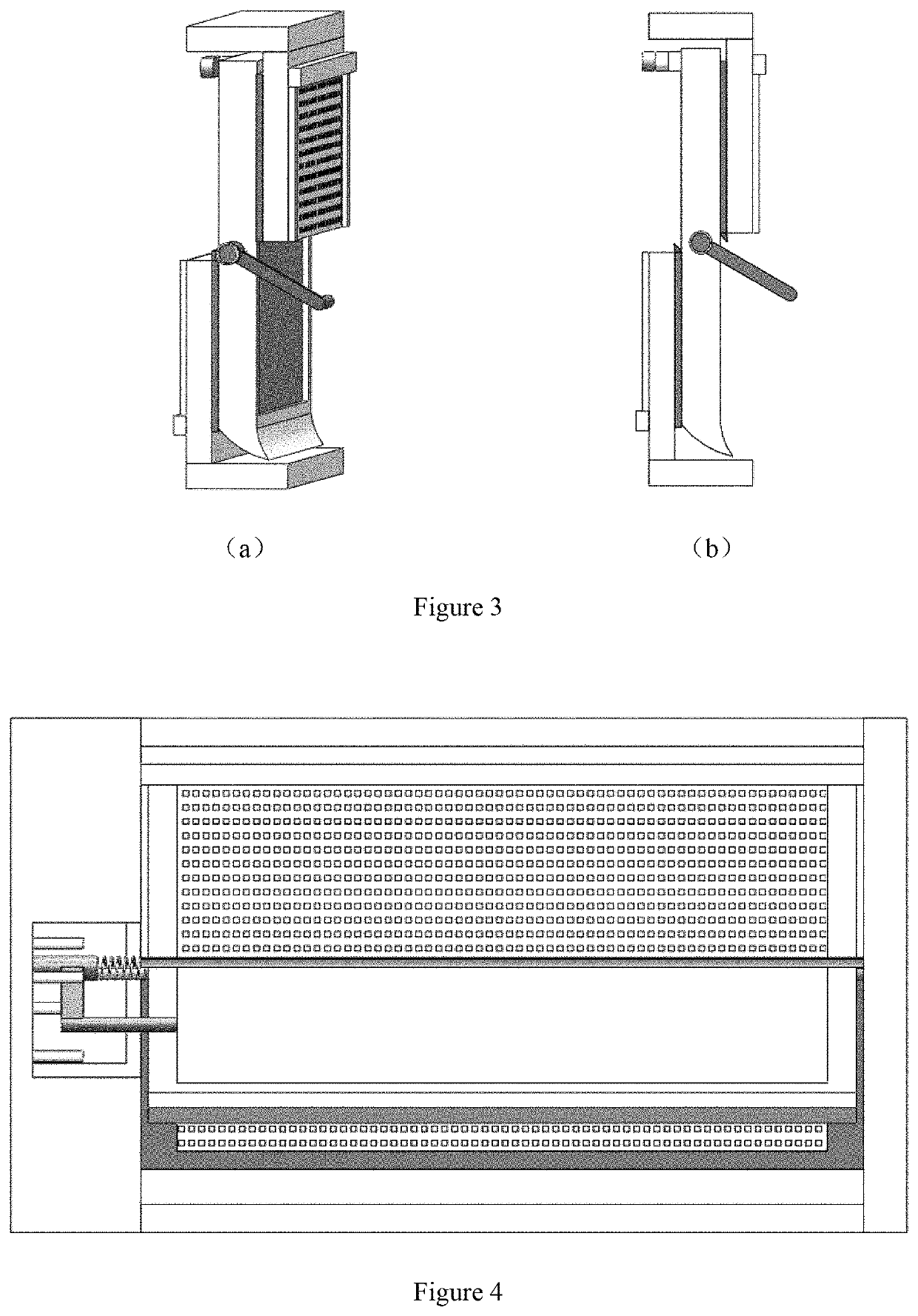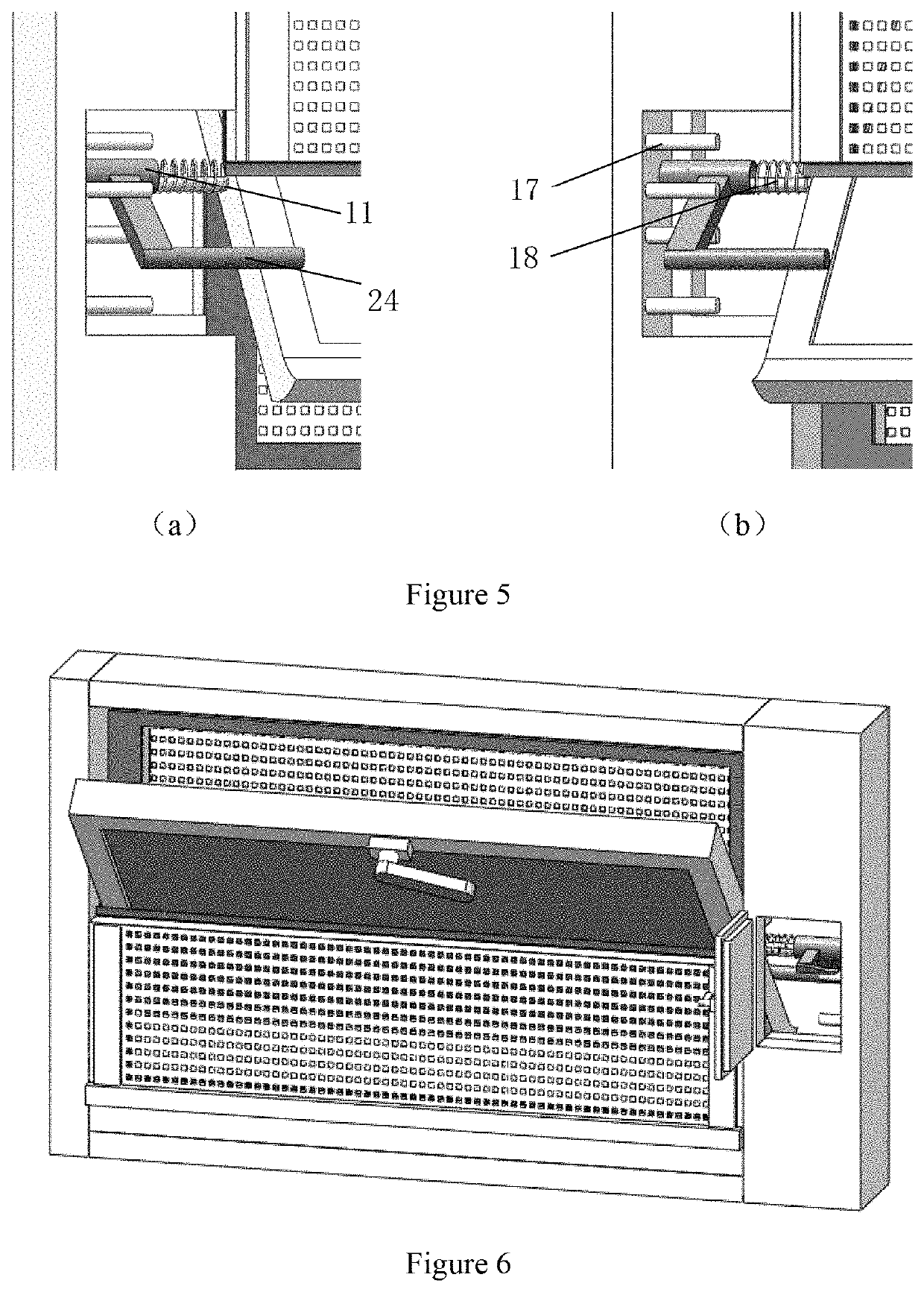Non-Power Driven Window Capable Of Adjusting Ventilation Rate
a technology of non-power-driven windows and ventilation rates, which is applied in the direction of door/window protective devices, insect protection, wing accessories, etc., can solve the problems of threatening human health and productivity, excessive indoor air, and inability to adjust the ventilation rate, so as to reduce the opening of the window, slow down the wind blowing, and maintain the outdoor air rate
- Summary
- Abstract
- Description
- Claims
- Application Information
AI Technical Summary
Benefits of technology
Problems solved by technology
Method used
Image
Examples
Embodiment Construction
[0032]The invention will be described in detail in conjunction with the drawings and specific embodiments.
[0033]FIG. 1 is an overall schematic view of the non-power window capable of adjusting ventilation rate. It contains sash's frame 1, glass pane 2, window handle 3, screen 7, position limiter to limit sash's rotation, seals, shock damper and window frames. The window handle 3 is installed on the sash's frame 1, which can be used to manually open or close the window. The screen 7 is mounted on the upper outdoor side and lower indoor side of the rotating shaft of the window. The screen 7 allows the window to be used in night to prevent mosquitoes or insects entering the room. The position limiter for window rotation is installed on the right side of the window frame, and the position limiter is adjustable after opening the exterior door on window frame 4.
[0034]FIG. 2 is a schematic view of the non-power window capable of adjusting ventilation rate at its opening status. The rotatin...
PUM
 Login to View More
Login to View More Abstract
Description
Claims
Application Information
 Login to View More
Login to View More - R&D
- Intellectual Property
- Life Sciences
- Materials
- Tech Scout
- Unparalleled Data Quality
- Higher Quality Content
- 60% Fewer Hallucinations
Browse by: Latest US Patents, China's latest patents, Technical Efficacy Thesaurus, Application Domain, Technology Topic, Popular Technical Reports.
© 2025 PatSnap. All rights reserved.Legal|Privacy policy|Modern Slavery Act Transparency Statement|Sitemap|About US| Contact US: help@patsnap.com



